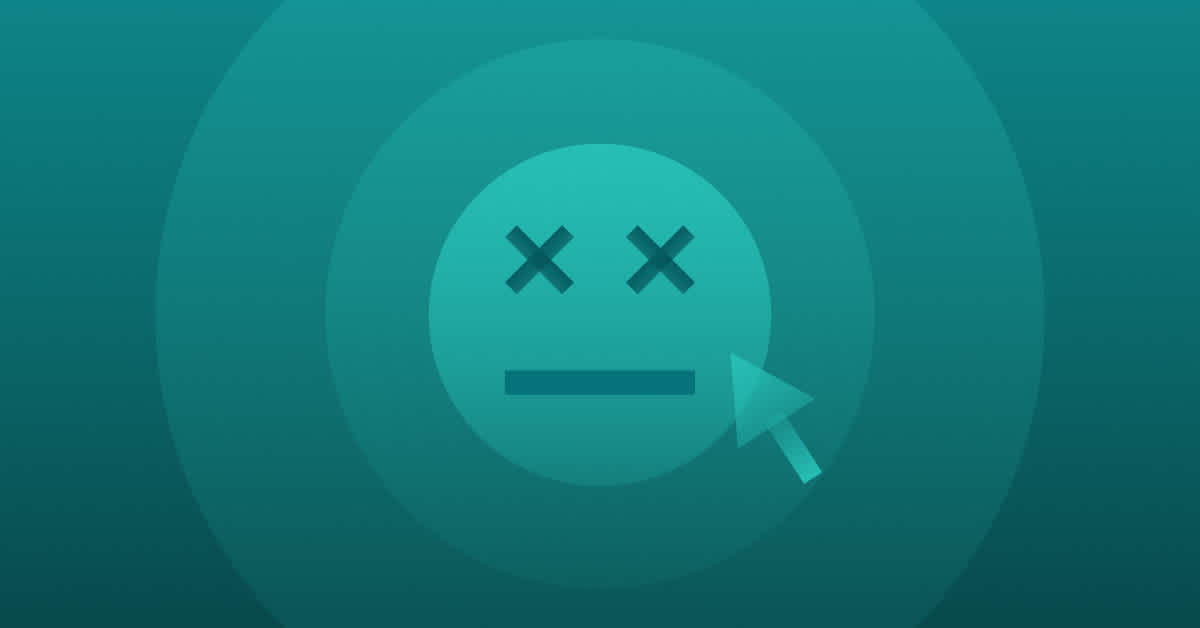You may have experienced the feeling when you try to click a button on a webpage or tap on a mobile app, and it doesn’t do anything. So you press it again, and again, and again.
That’s called “rage clicking," and it’s a key indicator of a big UX problem.
In this article, we break down what rage clicks are and how you can identify them, measure them, and take action to fix them.
What is a rage click?
Rage clicks are when users repeatedly click or tap on an element in a website or app, indicating frustration. They can often signal underlying website health issues, including:
Not understanding an element is clickable or not
Buttons that aren't functioning properly
Broken elements
Misleading content
Invisible overlays
What do rage clicks mean?
All clicks are not created equal. A rage click could be a user error or a sign of poor user experience. It takes data analysis to determine which.
Knowing what causes rage clicks can help you adjust that page or product area, which ultimately improves user experience. Staying informed about the latest UX trends can provide additional insights into designing frustration-free experiences and guiding users toward desired actions.
How do you find rage clicks?
Rage clicks can be detected during in-person usability testing, A/B testing, or with behavior analytics software.
The easiest way to determine if rage clicks are a sign of a poor experience is to use product analytics software or behavioral data platforms like Fullstory, which provide session replays and heatmaps to visualize user frustration.

In Fullstory, Rage Clicks™️ are logged when end users click multiple times rapidly in the same area. Using Fullstory's Session Replay platform capabilities, you can review the events leading up to the Rage Click and what the user does after repeatedly clicking.
Session Replay is the reproduction of a user’s interactions on a website or web application exactly how the user actually experienced it. It transforms logged user events like mouse movements, page visits, scrolling, and tapping into a reproduction of what the user actually did on the site or app.
This helps uncover aspects of the digital experience that aren’t working properly, like broken links, formatting issues, confusing navigation, and more.
Why do rage clicks happen?
At Fullstory, we understand user frustration signals. We’ve created a unique data analysis platform that identifies them by analyzing user behavior.
A few examples of why rage clicks happen:
There is “dead time” in an experience, which means a user is waiting for a page to load or for a response from a server.
An element looks like it should be clicked but doesn’t actually perform an action as expected.
Text on a website looks like a link but isn't, users may become confused and click it repeatedly.
How do teams turn rage clicks—an innately negative experience for users of websites and mobile apps—into something useful?
How do teams turn rage clicks—an innately negative experience for users—into valuable insights to improve app engagement and drive conversions?
How do you turn frustration signals into actionable insights?
Frustration signals such as rage clicks aren’t entirely a bad thing. Feedback, whether positive or negative, is a gift—as long as you know how to address it.
With the right tools, rage clicks can be used for actionable insights into user experience and how to make changes that end users—and you, by extension—will appreciate.
Imagine you want to know why the usage of your product’s new feature is low this month. With Fullstory's DXI platform, you can address broader concerns like product adoption by zooming directly into their root cause, such as Rage Clicks or other frustration signals, at the page element level. You can then bring qualitative and quantitative data to your team for an immediate fix.
Case study: How Flight Centre used behavioral data to find rage clicks and eradicate them
Founded in 1982 in Brisbane, Australia, Flight Centre is now one of the world’s largest business and group travel management companies, with over 2,600 travel consultants globally.
Before implementing a behavioral data solution that surfaces user frustration, Flight Centre found that their users were encountering booking errors. But without context or the ability to reproduce the errors, their team was left guessing at the root cause.
With Fullstory’s Session Replay and Dev Tools, not only could the product team see exactly what the errors look like through the users’ eyes, they could identify errors—such as frustration signals and Rage Clicks—at the API level and collaborate with engineering teams to correct the issue.
This ultimately led to a 22% decrease in lost bookings and a 24% increase in the usage of a key feature.
For more on Flight Centre, read their full case study.
How to measure Rage Clicks in Fullstory
User frustration signals can be measured with a DXI solution like Fullstory. Simply log in to Fullstory and find a rank-ordered list of elements that cause Rage Clicks in your app.
For more in-depth information, check out these additional articles:
With behavioral data, UX designers, product managers, and digital teams can make improvements by providing visual evidence about frustrating customer experiences with quantitative data about impact—all in one place.
Want to turn rage clicks into opportunities for success?
Request a demo of Fullstory's behavioral data platform today and turn customer frustration into delight.

